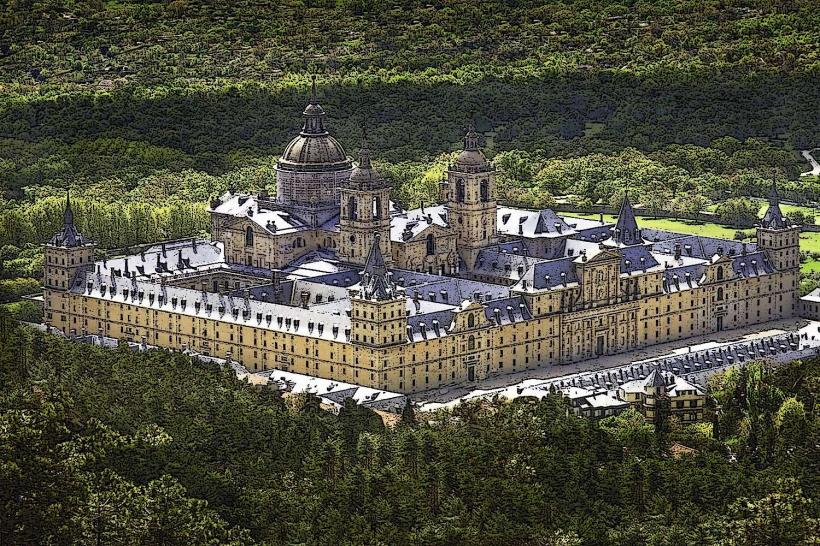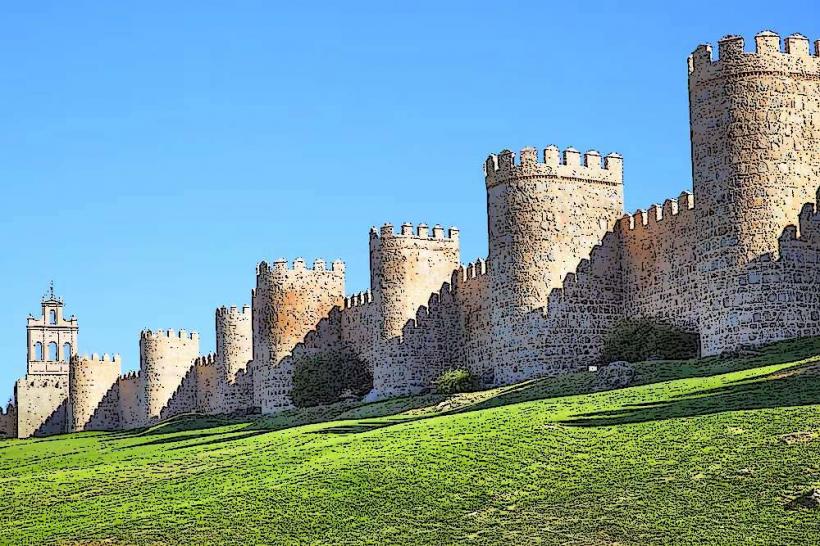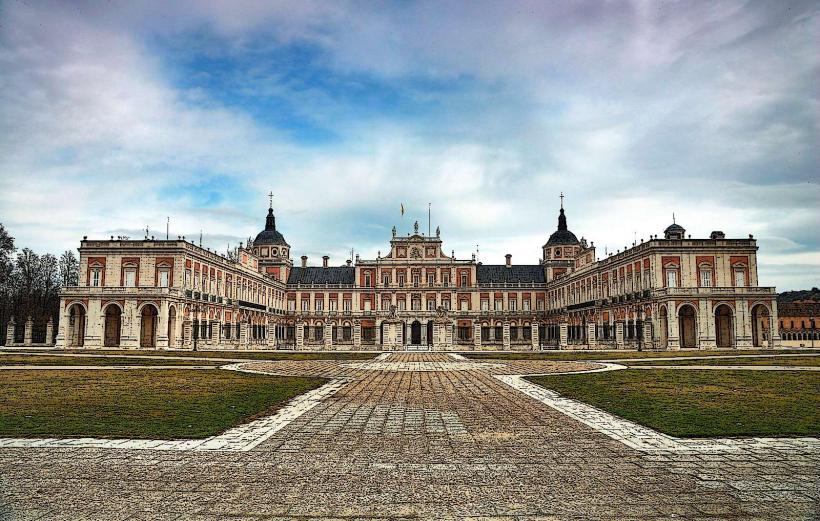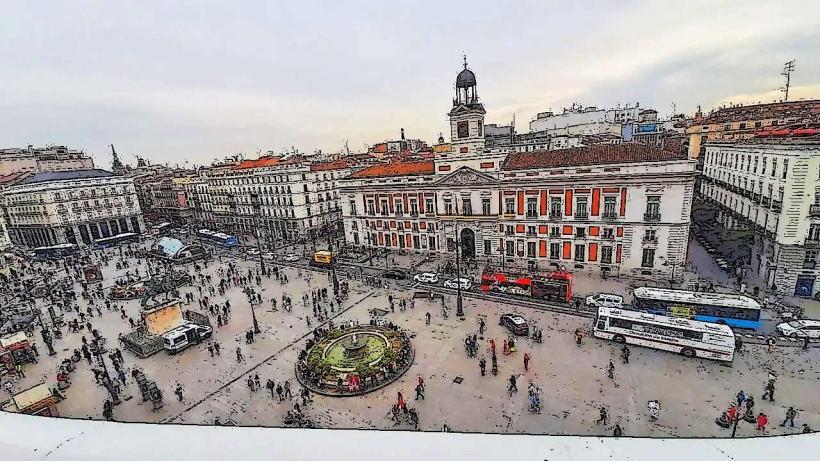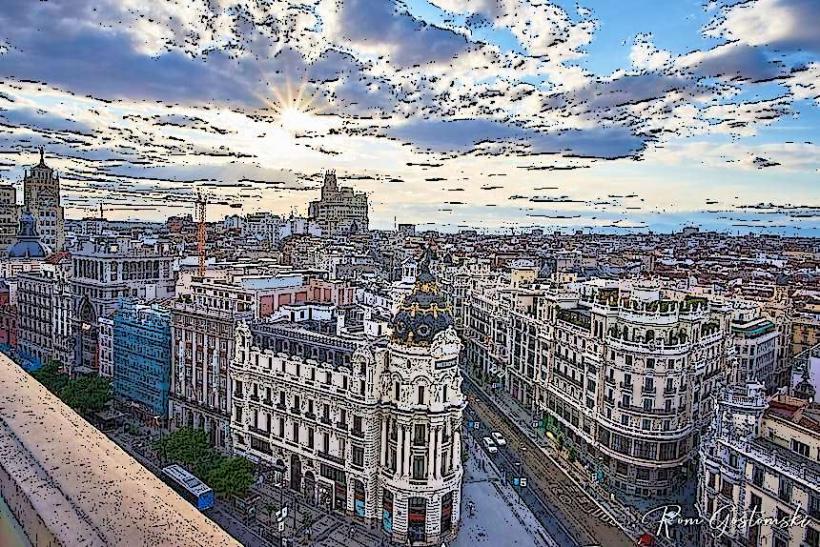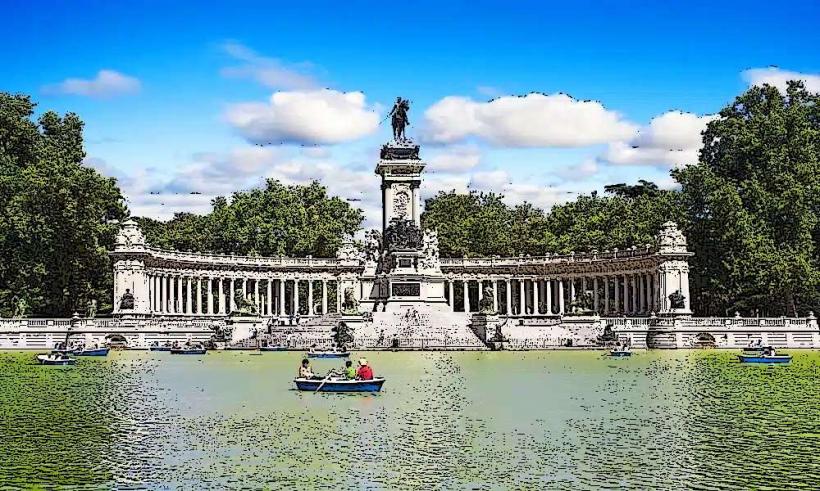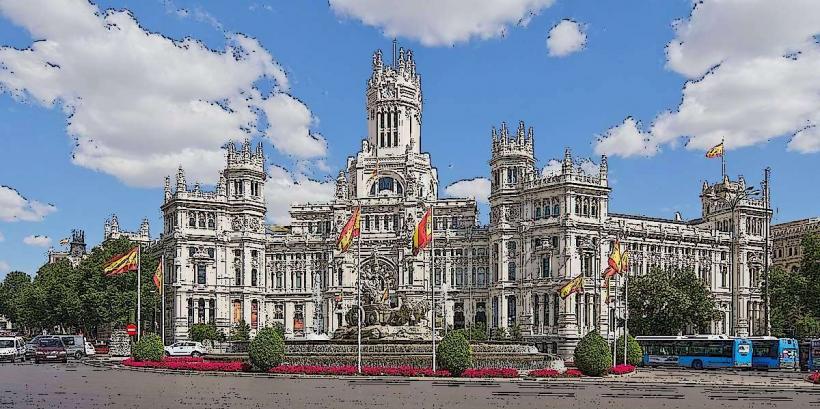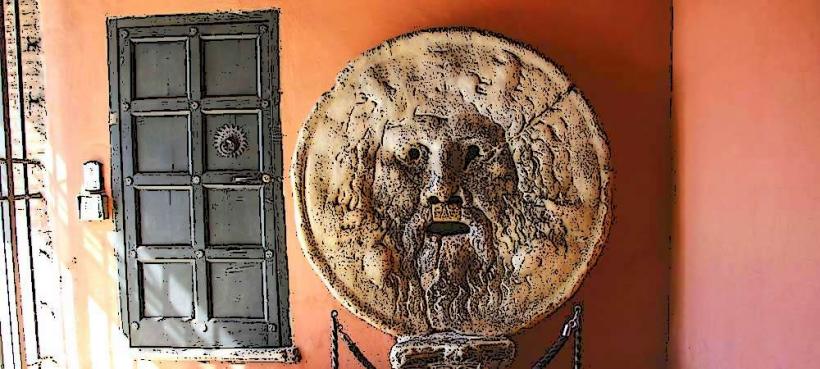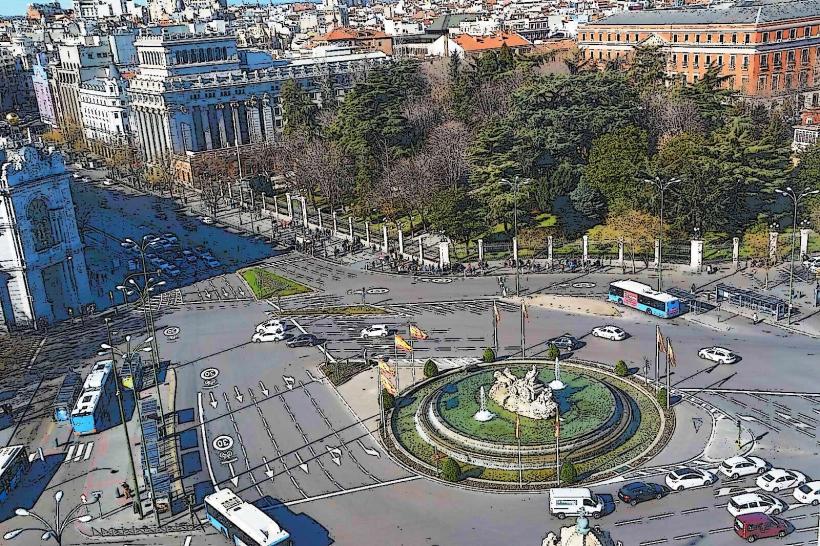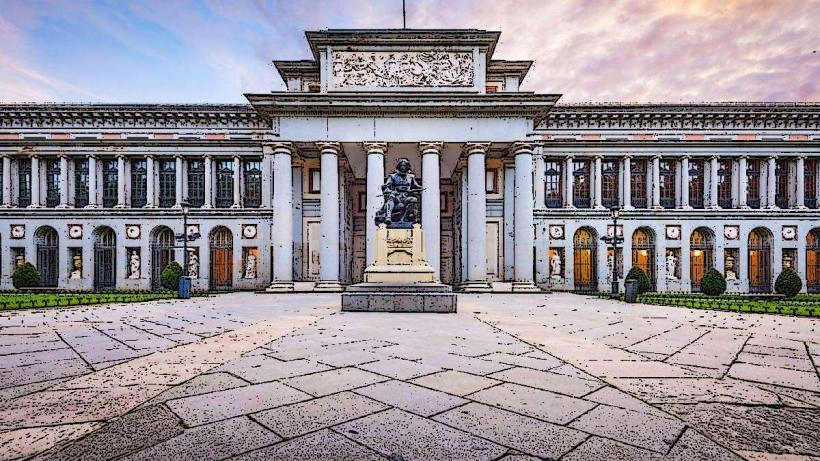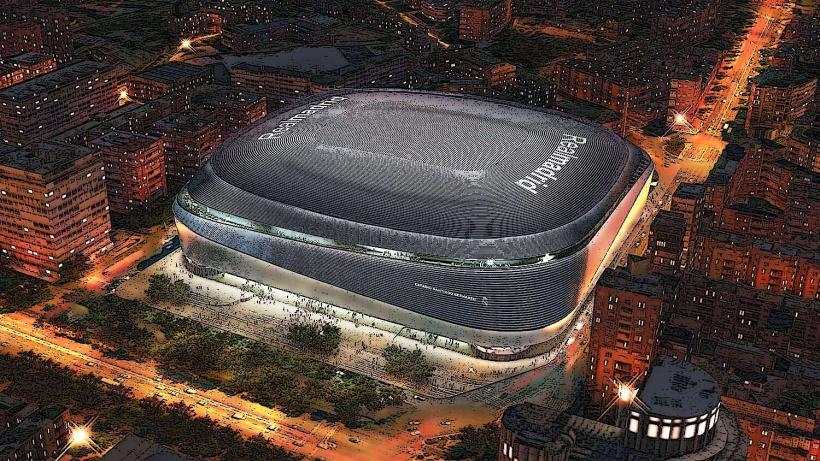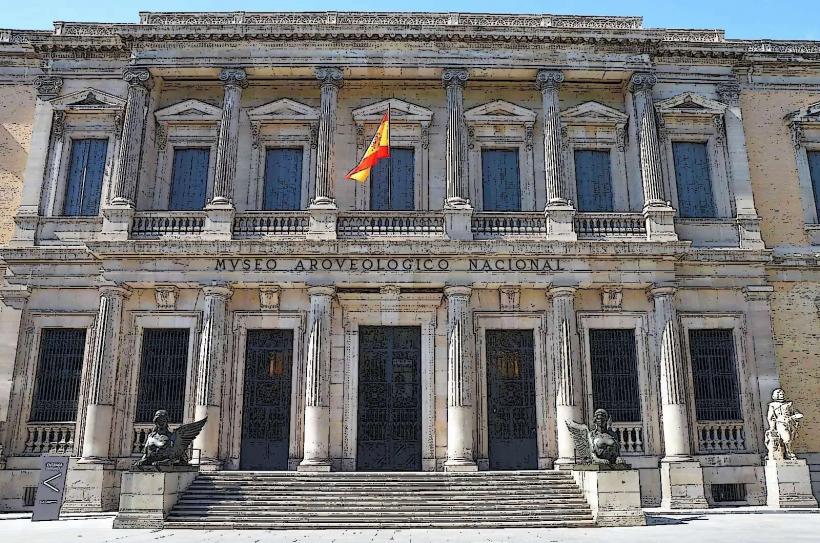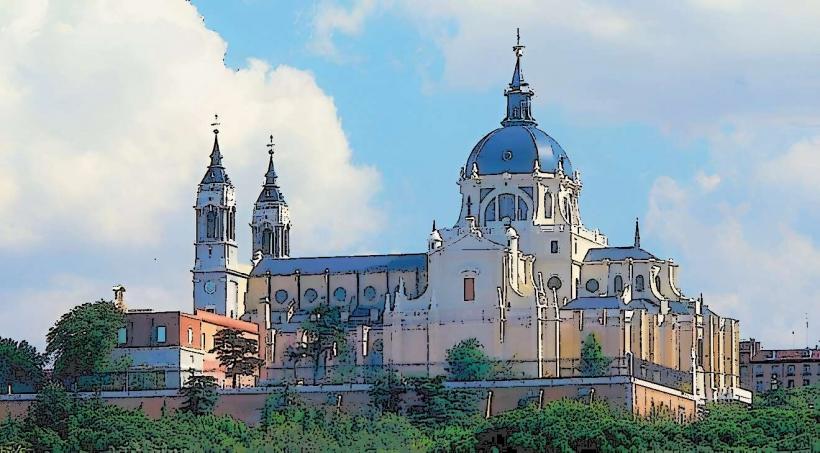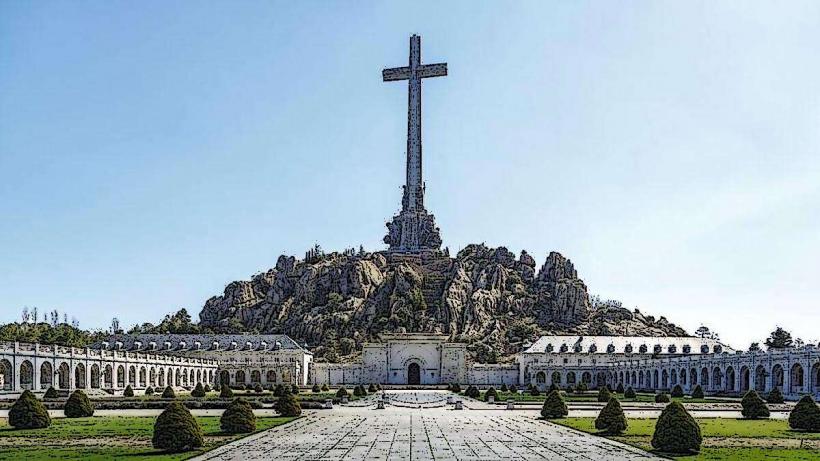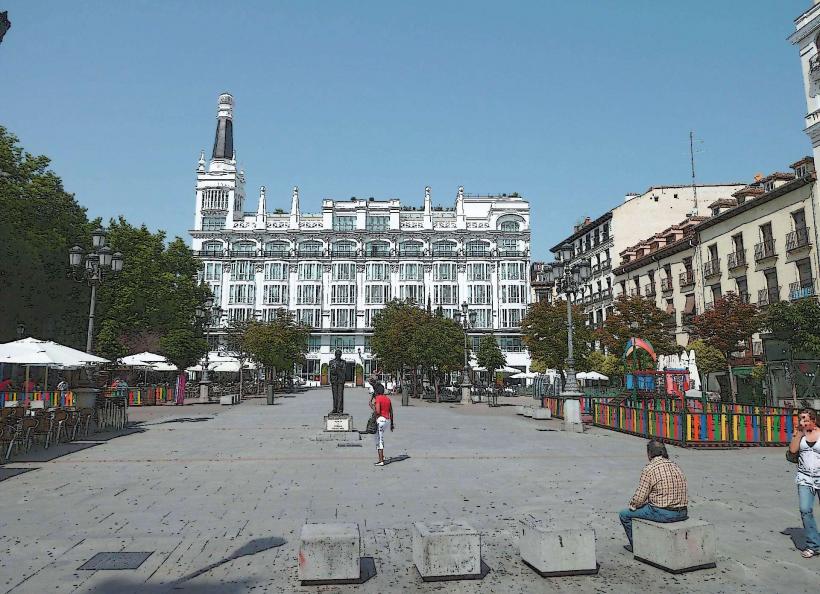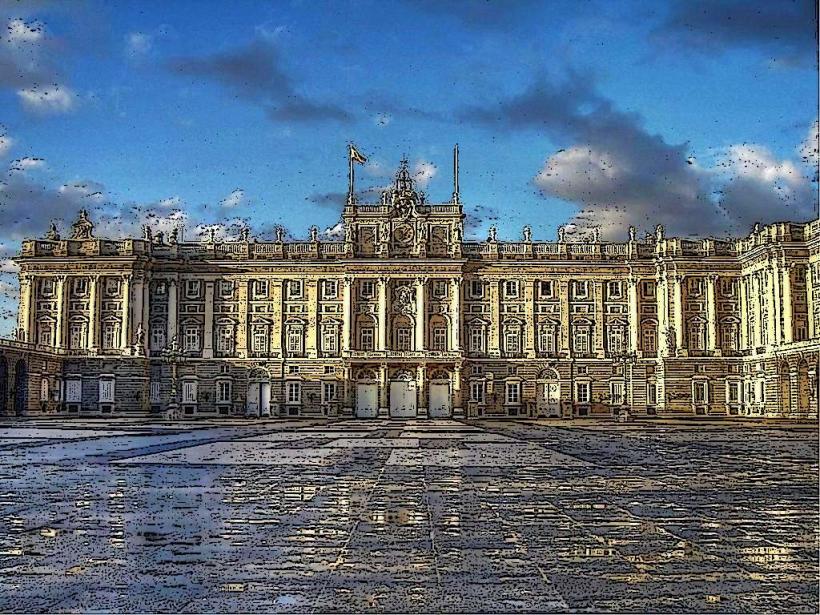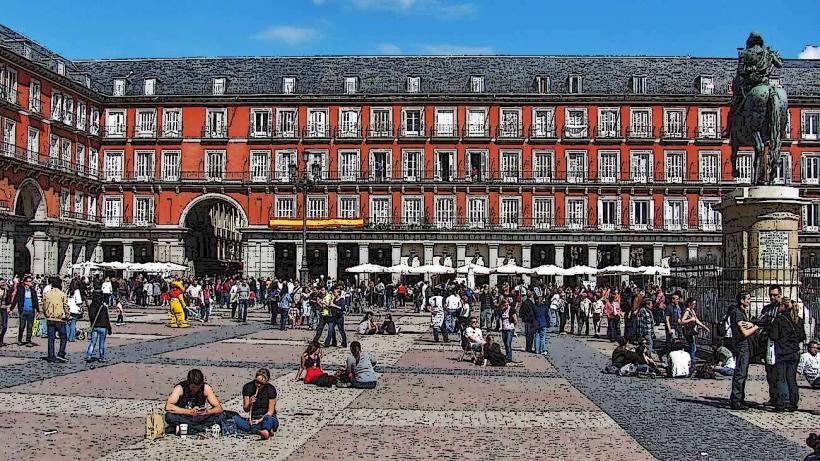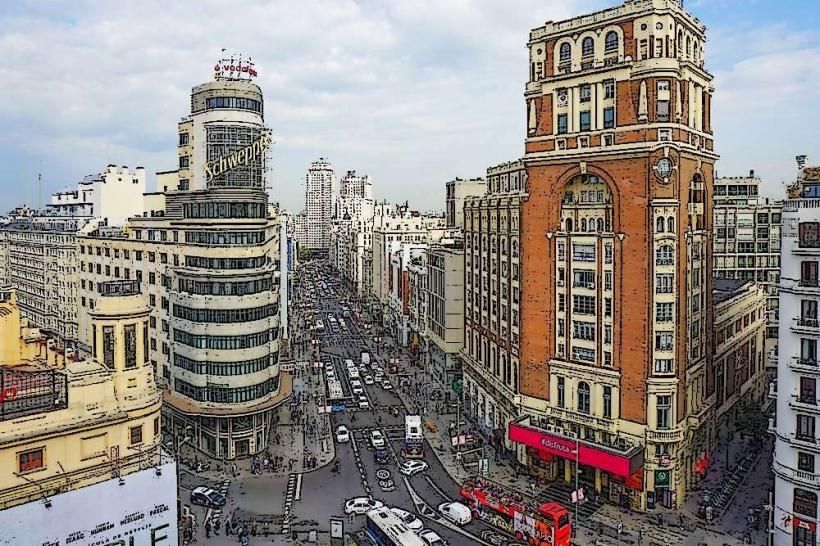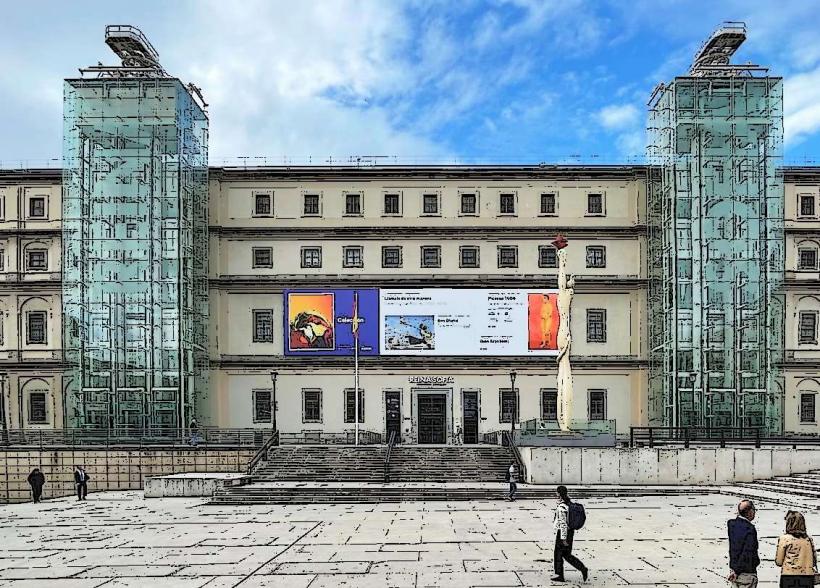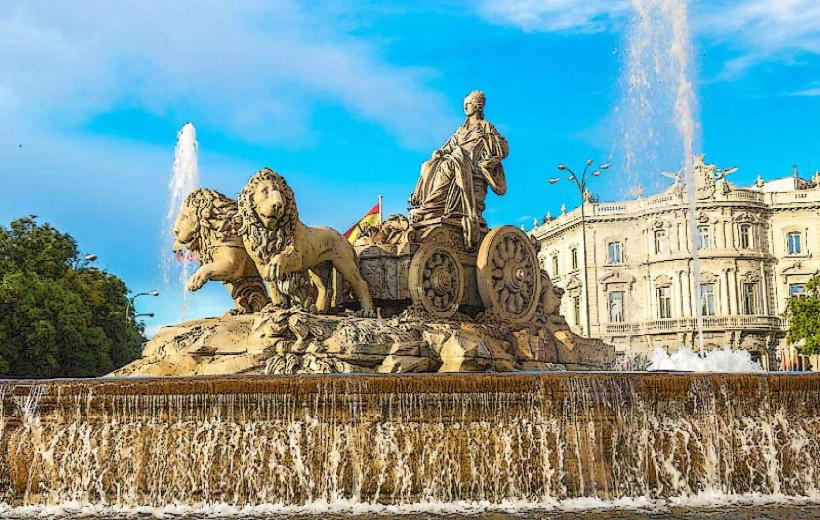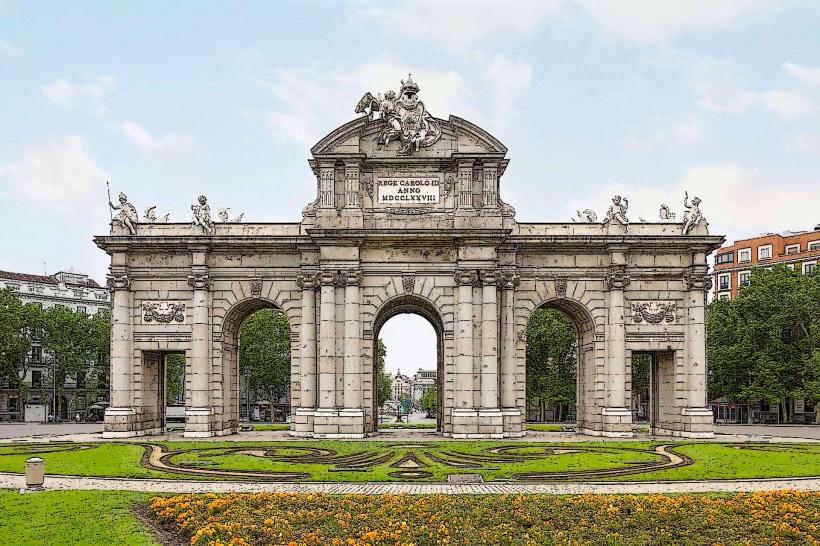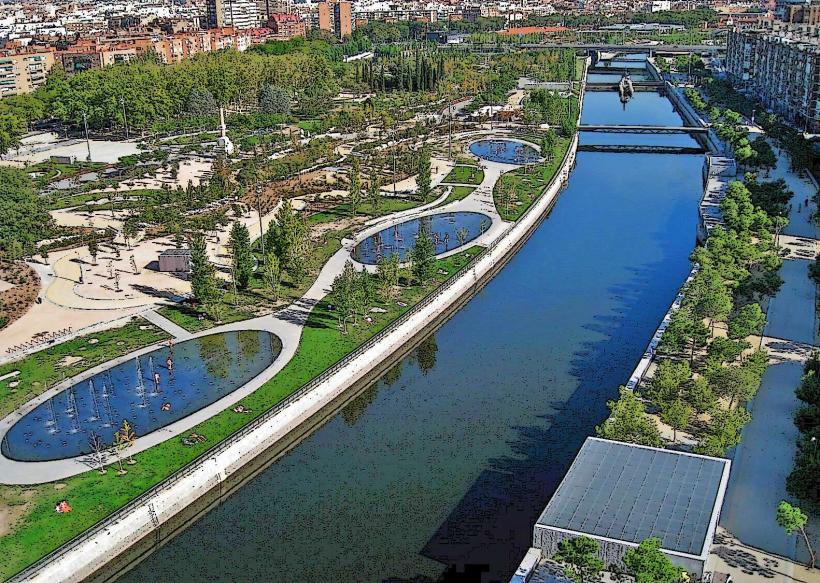Information
Landmark: Templo de DebodCity: Madrid
Country: Spain
Continent: Europe
The Templo de Debod (Temple of Debod) is an ancient Egyptian temple that stands in Madrid, Spain. It is one of the most unusual and significant historical landmarks in the city, as it is an authentic Egyptian temple that was dismantled and relocated to Spain in the 20th century.
Historical Background
The Temple of Debod originally stood in Egypt, in the area of Debod, near the Nile River, close to the town of Aswan. It was constructed in the 2nd century BCE during the Ptolemaic period, which was the last dynasty of ancient Egypt before the Roman conquest. The temple was dedicated to the Egyptian gods Amun and Isis and was likely used for religious rituals, including prayers and offerings to these gods.
The temple was built during the reign of Ptolemy VIII, but later, it was expanded and renovated by the Romans during their occupation of Egypt. This historical layering makes the temple a fascinating example of Egyptian and Roman religious architecture.
In the 1960s, the construction of the Aswan High Dam threatened the flooding of several ancient archaeological sites in Egypt, including the Temple of Debod. In order to preserve it, the Egyptian government, in gratitude to Spain for its help in saving the Abu Simbel temples, decided to donate the Temple of Debod to Spain in 1968. It was carefully dismantled, moved to Spain, and reconstructed in Madrid.
Location and Design
The Templo de Debod is located in the Parque de la Montaña (Mountain Park) near the Royal Palace of Madrid, on a hill that offers views of both the palace and the Almudena Cathedral. The temple is set in a beautiful landscaped garden and is surrounded by water features, which reflect the structure and add to its serene and majestic atmosphere.
Architectural Features
The temple is a relatively small but remarkably well-preserved example of ancient Egyptian architecture, and it stands out in Madrid due to its distinctive style. Some key features include:
- Pylon Gateway: The temple's entrance is marked by a large pylon, which is a gateway structure commonly seen in Egyptian temples. The pylon is decorated with reliefs depicting the gods Ra and Amun, with inscriptions celebrating the reign of the temple’s original builders.
- Sanctuary and Hypostyle Hall: The temple’s interior consists of several rooms, including the sanctuary, where religious ceremonies would have been held, and a hypostyle hall (a room with a roof supported by columns) which would have housed statues of gods and other sacred objects. The walls of the interior were decorated with hieroglyphs and paintings that depict the gods and kings of Egypt.
- Altar: In the sanctuary area, there is an altar where sacrifices or offerings would have been made to the gods.
- Orientation and Design: The temple was originally oriented toward the east, so it faced the rising sun. It also incorporates the typical Egyptian temple design with massive stone walls, columns, and a series of courtyards.
Cultural and Religious Significance
The Templo de Debod was a place of worship dedicated to Amun and Isis, two of the most important deities in the Egyptian pantheon. Amun was a major god associated with the sun, air, and creation, while Isis was a goddess of motherhood, fertility, and magic, revered across Egypt and beyond its borders.
The temple was built as a tribute to these gods and was designed to house statues, offerings, and altars. It was also likely used for astronomical observations and rituals that connected the physical world to the divine. Its dedication to the gods of Egypt and the astrological alignments within the temple reflect the ancient Egyptians' deeply ingrained spiritual and scientific knowledge.
Relocation to Spain
When the Egyptian government offered the temple as a gift to Spain, it was a gesture of gratitude for Spain's assistance in saving the Abu Simbel temples, which were similarly threatened by the construction of the Aswan High Dam. The relocation of the temple was a monumental task, as the temple's stones had to be carefully numbered and transported over 3,000 kilometers (1,900 miles) to Spain.
Once in Madrid, the Temple of Debod was reconstructed in Parque de la Montaña in a location that echoes the temple's original placement in Egypt, positioned on a hill overlooking a water basin. The site was inaugurated in 1972 and became one of Madrid’s most popular landmarks.
Visiting the Templo de Debod
The Templo de Debod is one of Madrid's most unique attractions. It is open to the public, and visitors can explore the temple's interior and enjoy its stunning surroundings.
Key Highlights for Visitors
- Exterior: The temple stands out against the backdrop of Madrid’s skyline and is especially beautiful during sunset, when the golden stone of the temple contrasts with the colors of the sky and the reflection in the water around the temple. The surrounding parkland, with its gardens and reflecting pools, offers a peaceful space to relax and enjoy the view.
- Interior: Inside, visitors can learn about the history of the temple, its Egyptian origins, and the process of its relocation to Spain. The museum inside the temple displays various artifacts from the temple's history and explains the significance of its architecture and religious functions.
- The Water Features: The temple is surrounded by a series of pools and waterways, which help to create an atmosphere reminiscent of the Nile River, enhancing the Egyptian theme of the site.
- Night Views: At night, the temple is beautifully illuminated, and it stands out as one of the most striking landmarks in Madrid, particularly when viewed from the nearby Plaza de España.
Cultural Impact and Symbolism
The Templo de Debod is a symbol of the long-standing relationship between Spain and Egypt, and it also serves as a testament to the international cooperation that was involved in saving ancient cultural sites. The relocation of the temple represents both Spain’s role in preserving world heritage and the fascinating connections between ancient civilizations.
For many visitors, the temple offers a serene and reflective experience, and it is a unique piece of ancient Egyptian culture in the heart of Madrid. It is a place to contemplate the grandeur of Egyptian architecture, the history of the temple, and the broader cultural ties between Spain and Egypt.
Nearby Attractions
- Plaza de España: A major square in Madrid, located just a short walk from the Templo de Debod. The plaza is home to the Monument to Cervantes and has many shops, restaurants, and cultural landmarks.
- Royal Palace of Madrid: A few minutes' walk from the Templo de Debod, the Royal Palace is a major historical site and one of Madrid’s most important tourist attractions.
- Sabatini Gardens: These beautifully landscaped gardens are located next to the Royal Palace and offer a peaceful space to relax, with fountains, sculptures, and lovely views of the palace and city.
Conclusion
The Templo de Debod is a rare and striking monument in Madrid that brings a piece of ancient Egyptian history to Spain. Its architectural beauty, historical significance, and peaceful surroundings make it one of the city’s most fascinating landmarks. Whether for its cultural heritage, architectural marvel, or serene atmosphere, the Templo de Debod offers a memorable experience for visitors from around the world.

